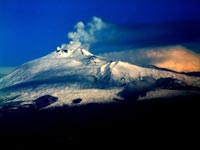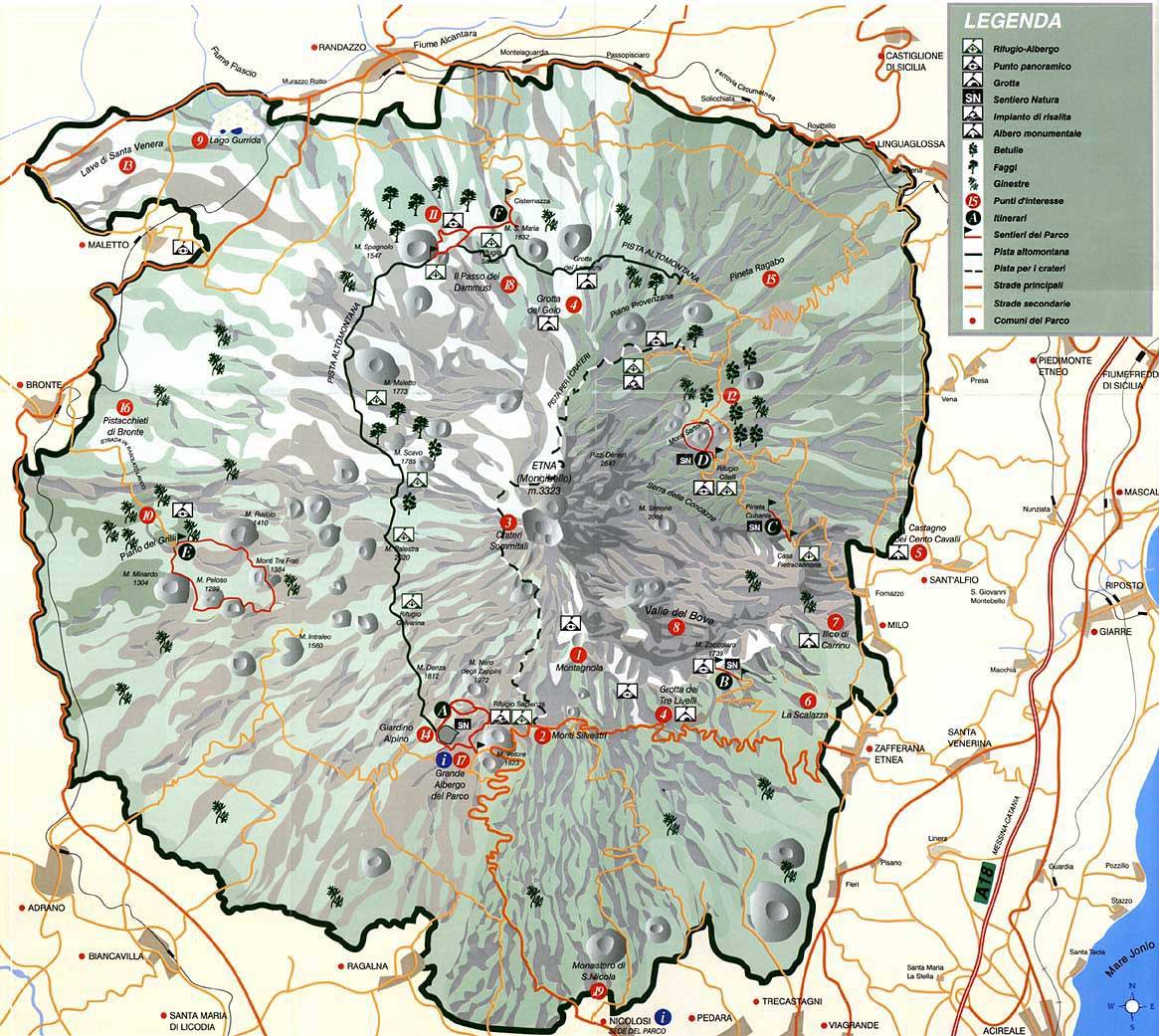
ETNA Excursions

There is a vast amount of excursional itineraries which can be assisted by expert guides to allow you to easily reach all the major attractions of the etna park, deep in the heart of nature whilst breathing unspoilt air and observing the breathtaking views.
The park has two main input ports, respectively Etna North (North gate), starting from Piano Provenzana and Etna Sud (South gate), which begins at Rifugio Sapienza.
The level of trekking is not very difficult, therefore it is accessible to people of all ages. Trails are of varying length and some can take a few hours to complete.
Some paths are done on foot, while other more difficult paths can be done making use of off-road 4X4 vehicles. To visit the summit you can use the Cable car (Funivia) which is currently running at Rifuggio Sapienza at 1.923 meters above sea level and reaches 2500 meters.
Be aware of the unpredictability of the mountain! Make sure to wear the proper clothing, ie; hiking shoes, jacket, backpack and flashlight.. See weather conditions before departure!
NEWS! Etna Eruption, April 2017
Spectacular lava flow emission from the active vent on top of Etna between the Old and New Southeast Crater.
NEWS! Etna, 20th February 2013
Etna thriving with two eruptions in less than 24 hours. In this video the eruption in the early hours of the night of the 20th of February 2013, with explosions and lava fountains from the New South East Crater and the formation of a lava flow that has slipped into the snow in the Valle del Bove.
The activity has once again formed a cloud of ash which has fallen on the eastern half of the volcano causing disruptions in several towns, including Giarre, Riposto and Zafferana.
NEWS! Etna 13-04-2012
On Friday, April 13th Etna began a new eruptive phase, the sixth this year.
The new eruptive phase, began with the release of fountains of lava and ash from the new South-East crater.
NEWS! Etna January 13, 2011
A deep pit has opened on the eastern flank of the southeast crater. This new eruptive phase lost power during the night of the 13th after the volcano gave a spectacular show with violent explosive activity from the crater pit, from which escaping lava has poured into the Valle del Bove.
The phenomena of Wednesday evening were seen at great distances as fountains of molten lava were launched hundreds of feet into the air and could be seen from as far as Catania and Taormina.
Mount Etna

Mount Etna is one of the world's most active volcanoes. It has been erupting for several million years. It has more than 400 craters which can be found all over the Catania county.
To the ancient Greeks, Mount Etna was the realm of Vulcan, the God of Fire, and the home of the one-eyed monster known as the Cyclops.
Etna Park Map

Mount Etna is Europe's largest volcano (350 km3), and one of the most active volcanoes on Earth, with frequent periods of intermittent to persistent activity in the summit area and major eruptions from eruptive centers on its flanks every 2-20 years. The main feature of Etnean activity is voluminous lava emission, but strong explosive activity occurs occasionally, mostly from its presently four summit craters.
Etna is particular for a number of reasons. First, it has the longest record of historical eruptions among all volcanoes on this planet, its first historically documented eruption occurring at about 1500 BC. The total number of eruptions is 209 eruptions through late 1993. To these, there have now to be added the spectacular and vigorous summit eruptions of 1995-2001, the flank eruption of July-August 2001, and the vigorous ash emissions initiated in late March 2002.
Etna lies in an area that is still not well understood from a geological standpoint. While some scientists relate, in a broader sense, the Etnean volcanism to subduction of the Ionian oceanic seafloor beneath the Calabrian Arc (with volcanism on the Aeolian Islands as one consequence), others postulate a hot spot beneath Etna, thus explaining its high lava production and fluid mafic magmas.
Still another hypothesis sees Etna in a complex rifting environment, and among the few things which are quite well understood is the fact that the volcano lies at the intersection of several major regional fault systems.
Whatever of this is true, it is evident that Etna lies in a very complex geodynamic environment hardly comparable to any other region on Earth.
There is some evidence that Etna is but the most recent manifestation of volcanism fed from a very long-lived mantle source, having caused numerous earlier phases of mafic volcanism in the Monti Iblei, Sicily, from the late Triassic to the early Pleistocene.
